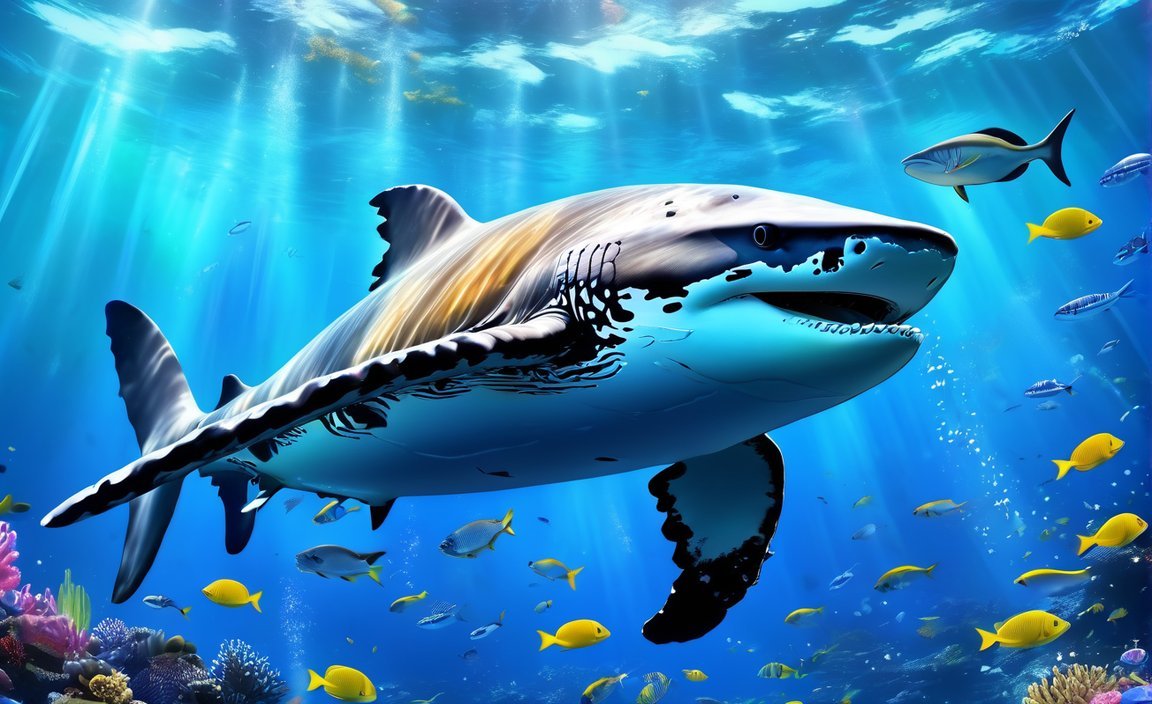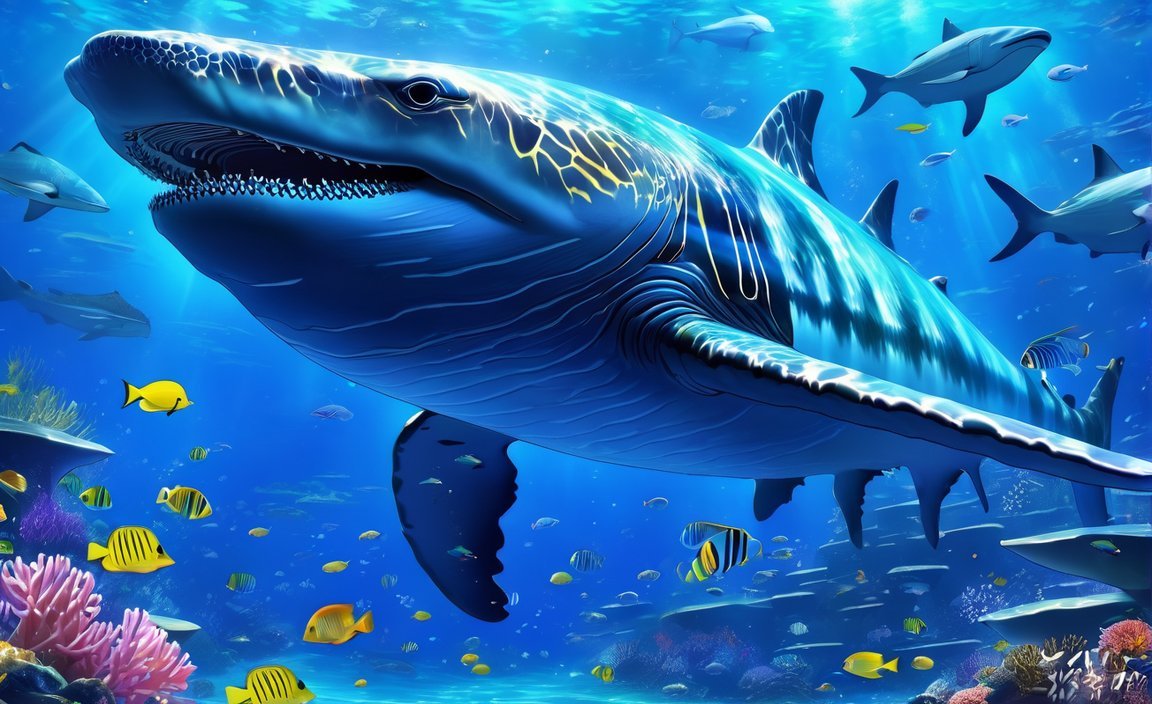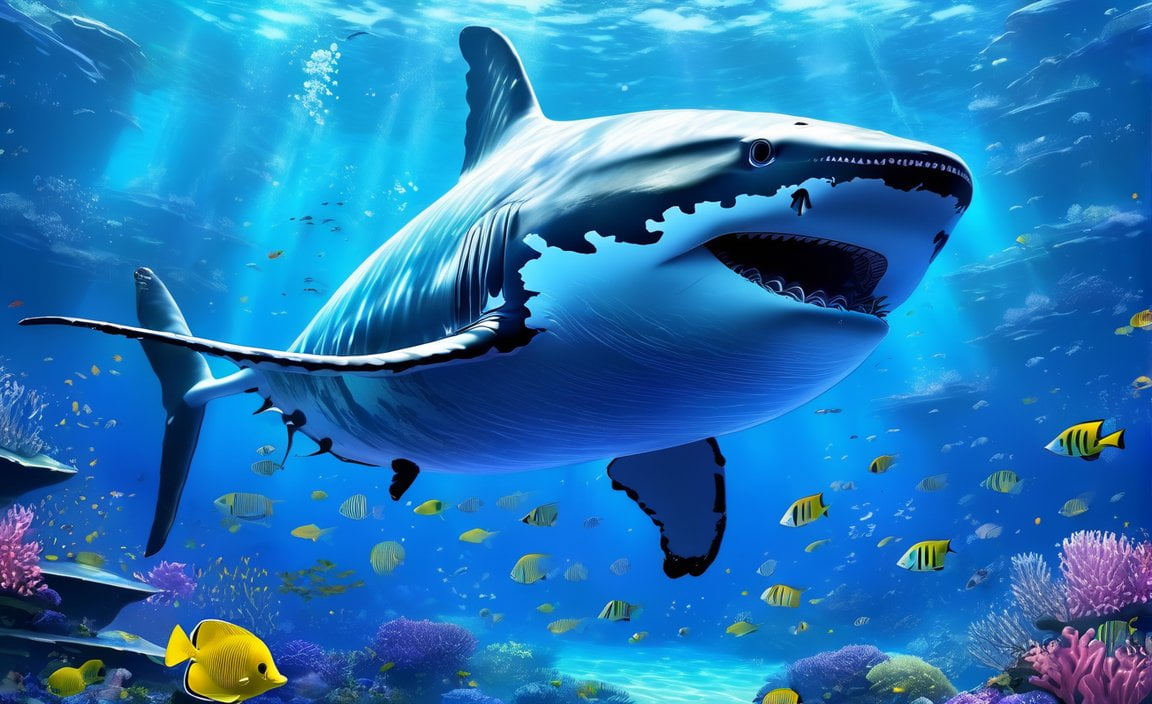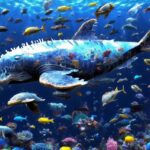Welcome to “Exploring the Secrets: 5 Fascinating Facts About Marine Biology!” Prepare to immerse yourself in the captivating world of the marine biome, where three distinct ecosystems – oceans, coral reefs, and estuaries – create a symphony of life beneath the waves. As you delve deeper, you’ll discover that these vast bodies of water, which cover over 70% of our planet, serve as the primary source of our precious oxygen. Intriguingly, many scientists believe that life itself originated in the marine biome billions of years ago. However, this remarkable environment faces grave threats from climate change, pollution, and the persistent challenge of plastic waste. Join us as we explore five awe-inspiring facts that shine a light on the wonders and challenges of marine biology.

Key Takeaways:
– Jellyfish have been around for over 650 million years, predating dinosaurs and sharks, showcasing their remarkable adaptability.
– Electric eels can generate enough electricity to power up to ten electric bulbs and use electric shocks for navigation, communication, and hunting.
– Dolphins exhibit unique sleep patterns, sleeping with one half of their brain at a time while keeping one eye open to remain vigilant.
– The ocean is home to a vast diversity of marine life, with over 1 million known species and the potential for countless more discoveries.
– The oceans cover 71% of Earth’s surface, hold 97% of the planet’s water supply, and play a crucial role in regulating climate and supporting life.
– Life on Earth originated in the oceans approximately 3.2 billion years ago, and 95% of all life on the planet is found in the oceans.
– The oceans harbor diverse ecosystems, providing habitats for numerous species and supporting complex food webs.
5 Facts About Marine Biology
Marine biology is an incredible field that allows us to unravel the mysteries of the ocean and discover the fascinating lives of its inhabitants. In this article, we will explore five amazing facts about marine biology that will leave you in awe of the hidden world beneath the waves.
Fact 1: Jellyfish, Ancient Creatures
Did you know that jellyfish have been around for more than 650 million years? That’s even older than dinosaurs and sharks! Their enduring presence is a testament to their remarkable adaptability and survival skills. These ancient creatures have evolved over time to thrive in different marine environments, and they continue to mesmerize us with their unique beauty and otherworldly forms.
Fact 2: Electric Eels and Electricity
When we think of marine biology, we often imagine vibrant coral reefs and colorful fish. However, there are also fascinating creatures like electric eels that possess incredible abilities. Electric eels are capable of generating electricity, and they can produce enough electrical charge to light up to ten electric bulbs. This electric shock is used for navigation, communication, and hunting, showcasing the amazing adaptability of marine life.
Fact 3: Dolphins’ Sleep Patterns
Dolphins are highly intelligent creatures known for their playful nature and acrobatic displays. But did you know that dolphins have unique sleep patterns? These remarkable animals sleep with only half of their brain at a time, while keeping one eye open. This allows them to remain vigilant and on the lookout for predators and other potential threats while still getting the rest they need. It’s an extraordinary adaptation that showcases the complex lives of marine mammals.
Fact 4: Vast Diversity of Marine Life
The ocean is a treasure trove of biodiversity. There are over 1 million known species of marine life, and this number represents only a small fraction of what awaits discovery. Marine biologists are constantly amazed by the variety and complexity of organisms that call the ocean home. From tiny plankton to massive whales, the diversity of marine life is truly awe-inspiring. This highlights the importance of continued exploration and conservation efforts to protect these delicate ecosystems.
Fact 5: The Dominance of the Oceans
The oceans cover about 71% of the Earth’s surface and contain 97% of the planet’s water supply. With an average depth of 2.3 miles (3.7 kilometers), the ocean holds a significant portion of Earth’s natural resources and plays a crucial role in regulating climate and supporting life on our planet. The vastness of the ocean and its influence on our daily lives cannot be overstated. It is a powerful force that shapes our world in more ways than we can imagine.
These five facts about marine biology offer a glimpse into the wonders that lie beneath the waves. From ancient jellyfish to electric eels and the incredible diversity of marine life, the ocean continues to amaze us with its secrets. So, the next time you find yourself gazing at the vast expanse of the ocean, remember that it holds a wealth of stories just waiting to be discovered.
To learn more about marine biology and explore further intriguing facts, you can refer to the following sources:
- All That’s Interesting. “Ocean Animals Facts: 10 Amazing Things You Never Knew About Marine Life.” URL: Ocean Animals Facts: 10 Amazing Things You Never Knew About Marine Life
- I Love Fact. “Fun Facts About Marine Biology That Will Make You Go Wow.” URL: Fun Facts About Marine Biology That Will Make You Go Wow
These sources provide more in-depth information and additional facts about the intriguing world of marine biology. Happy exploring!
Check out these amazing 5 facts about marine life that will blow your mind. Seriously, you won’t believe what you’re about to discover!
Many Scientists Believe Life originated in the marine biome around 3.8 to 4 Billion years ago
The marine biome, encompassing the vast oceans and seas of our planet, holds a captivating history that dates back billions of years. According to many scientists, life itself originated in this aquatic realm around 3.8 to 4 billion years ago. This belief is supported by numerous pieces of compelling evidence that shed light on the beginnings of life on Earth.
Here are five fascinating facts that support the notion that life originated in the marine biome:
1. Connection to the Primordial Soup
One of the prevailing theories regarding the origin of life is the concept of the “primordial soup.” This theory suggests that the early Earth’s seas and oceans served as a rich mix of chemicals and organic compounds, providing the perfect conditions for life to emerge. Many scientists believe that the marine biome, with its vast expanses and abundant resources, harbored this primordial soup, acting as the nurturing cradle for life’s first sparks.
2. Evolutionary Links from Marine Organisms
By studying the genetic makeup and evolutionary history of various organisms, scientists have uncovered compelling evidence of life’s marine origins. Countless species, from microorganisms to complex marine animals, have genetic ties that trace back to common marine ancestors. These connections and shared genetic traits provide significant insights into the web of life that originated in the marine biome.
3. Fossil Records and Early Life Forms
Fossils have played a crucial role in piecing together the puzzle of life’s origins, and many of the earliest fossil records point to marine environments. These records reveal the presence of microorganisms and simple multicellular organisms that thrived in ancient marine ecosystems. The preserved remains of these early life forms provide a tangible glimpse into the world of our marine ancestry.
4. Abundance of Nutrients and Energy
The marine biome offers an unparalleled abundance of nutrients and energy sources, making it a favorable environment for the emergence and sustenance of life. The oceans are rich in essential elements and minerals necessary for biochemical reactions and the development of complex organisms. Additionally, the constant movement of water, tides, and the interaction between sunlight and the oceans create dynamic energy systems that fuel the growth and diversification of marine life.
5. Primitive Conditions in Ancient Oceans
Studying the ancient oceans provides valuable insights into the conditions that supported the origin of life. Many scientists believe that the early marine environment had a different composition than today, with higher concentrations of particular gases and different temperature regimes. By understanding the primitive conditions of the ancient oceans and the chemical reactions they fostered, scientists can piece together the puzzle of how life emerged and evolved in this unique ecosystem.
Key Takeaways:
- According to many scientists, life originated in the marine biome around 3.8 to 4 billion years ago.
- The marine biome provided the conditions for the formation of the primordial soup and the emergence of life.
- Genetic links among organisms and fossil records support the idea of marine origins for life.
- The abundance of nutrients and energy in the oceans played a significant role in the development of life.
- Studying the ancient oceans helps scientists understand the primitive conditions that fostered the origin of life.
References
Climate Change, Pollution, and Plastics: Threats to the Marine Biome
As our world faces increasing environmental challenges, it is vital to recognize the significant threats posed to the marine biome. Climate change, pollution, and plastics have emerged as major concerns, with profound impacts on marine ecosystems and the delicate balance of life beneath the waves. In this article, we will explore five fascinating facts about marine biology and delve into the intricate relationship between these threats and the marine biome.
Fact 1: Climate Change and Plastic Pollution Exacerbate Each Other
[Climate change, pollution and plastics are major threats to the marine biome]. A growing body of research highlights the interconnectedness between climate change and plastic pollution, revealing a disturbing feedback loop. Increased coastal development and climate change-driven storms have facilitated the dispersal of plastic materials from coasts into the open ocean. This phenomenon, known as biological rafting, poses a significant risk to marine ecosystems. Plastic pollution, in turn, contributes to climate change by releasing greenhouse gases during the production and decomposition processes. These dual threats intensify the challenges faced by the marine biome, necessitating immediate action to safeguard its future. [^1]
Fact 2: Devastating Impacts on Marine Life and Ecosystems
The consequences of plastic pollution on marine life and ecosystems are profound. Plastic waste entangles and suffocates marine animals, causing injures and deaths. Furthermore, many marine species mistake plastic fragments for food, leading to ingestion and subsequent health issues. The accumulation of plastics in the food chain not only affects individual organisms but also disrupts entire ecosystems. The toxic chemicals present in plastics can lead to reproductive abnormalities, impaired immune systems, and altered behavior in marine organisms. The destruction of fragile habitats, such as coral reefs and seagrass beds, further exacerbates the harmful effects of plastic pollution on marine biodiversity. [^2]
Fact 3: Threats to Food Safety, Human Health, and Climate Change
Plastic pollution in the marine biome poses far-reaching consequences beyond the realm of marine life. The ingestion of microplastics by fish and other marine organisms can ultimately lead to human consumption of these contaminated species, posing risks to food safety and quality. Additionally, plastic debris negatively impacts coastal tourism, deterring visitors and harming fragile economies. Plastic production and disposal also contribute to greenhouse gas emissions, exacerbating the effects of climate change. Addressing plastic pollution is, therefore, crucial not only for the well-being of marine ecosystems but also for human health and our planet’s future. [^3]
Fact 4: The Urgency of Integrated Research
Studying the adverse effects of climate change and plastic pollution on the marine biome requires an integrated approach. However, research efforts often focus on these stressors independently, hindering a comprehensive understanding of their combined impacts. Only a small percentage of scientific articles examine both climate change and plastic pollution, indicating a knowledge gap that needs to be addressed. Integrated research initiatives are essential to unraveling the complex interplay between these threats and developing effective conservation strategies for the marine biome. ^4
Fact 5: The Alarming Scale of Plastic Pollution
The scale of plastic pollution in our oceans is staggering. Each year, over 300 million tons of plastic are produced globally, with a significant portion finding its way into marine environments. Studies estimate that at least 14 million tons of plastic enter the ocean annually, with coastal development and storms acting as major contributors. The pervasive presence of plastic in marine ecosystems necessitates urgent action to reduce plastic production, improve waste management systems, and implement effective policies to combat this pervasive threat to the marine biome. [^5]
Key Takeaways:
- Climate change and plastic pollution are major threats to the marine biome, with profound implications for marine ecosystems and biodiversity.
- The interconnectedness between climate change and plastic pollution exacerbates the challenges faced by the marine biome, creating a disturbing feedback loop.
- Plastic pollution has devastating impacts on marine life and ecosystems, causing injuries, deaths, and disruption of entire food chains.
- Plastic pollution extends beyond marine life, affecting food safety, human health, coastal tourism, and contributing to climate change.
- Integrated research efforts are urgently needed to understand the combined impacts of climate change and plastic pollution on the marine biome.
- The alarming scale of plastic pollution highlights the critical need for global action to reduce plastic production, improve waste management, and protect marine ecosystems.
Sources:
[^1]: Ford, H. V., Jones, N. H., Davies, A. J., Godley, B. J., Jambeck, J. R., Napper, I. E. (2022). The fundamental links between climate change and marine plastic. ScienceDirect. Link
[^2]: United Nations Educational, Scientific and Cultural Organization. (2022). Plastic Pollution: A Global Challenge Threatening the Oceans and Human Health. UNESCO Ocean Literacy. Link
[^3]: International Union for Conservation of Nature. (n.d.). Marine plastic pollution. Link
[^5]: International Union for Conservation of Nature. (2021). Marine Plastics Report 2021: Plastic pollution and the contribution of key sectors to the plastic footprint. IUCN Global Programme on Marine Plastics. Link

FAQ
Q1: What are the three main ecosystems within the marine biome?
A1: The marine biome is divided into three ecosystems: oceans, coral reefs, and estuaries.
Q2: How does the marine biome contribute to the Earth’s oxygen levels?
A2: The majority of the Earth’s oxygen comes from the oceans, as they play a crucial role in oxygen production.
Q3: When did scientists believe life originated in the marine biome?
A3: Many scientists believe that life originated in the marine biome around 3.8 to 4 billion years ago.
Q4: What are some major threats to the marine biome?
A4: Climate change, pollution, and plastics are major threats to the marine biome.
Q5: What is the significance of the mid-ocean ridge?
A5: The mid-ocean ridge is the longest mountain range on Earth and is located within the marine biome.
- Guatemala vs. Costa Rica: Plan Your Trip Smartly - April 16, 2025
- Master Types of Pumps: Ultimate Guide to Selection - April 16, 2025
- Unlock Types of Makeup Secrets: Master Any Look Now - April 16, 2025
















